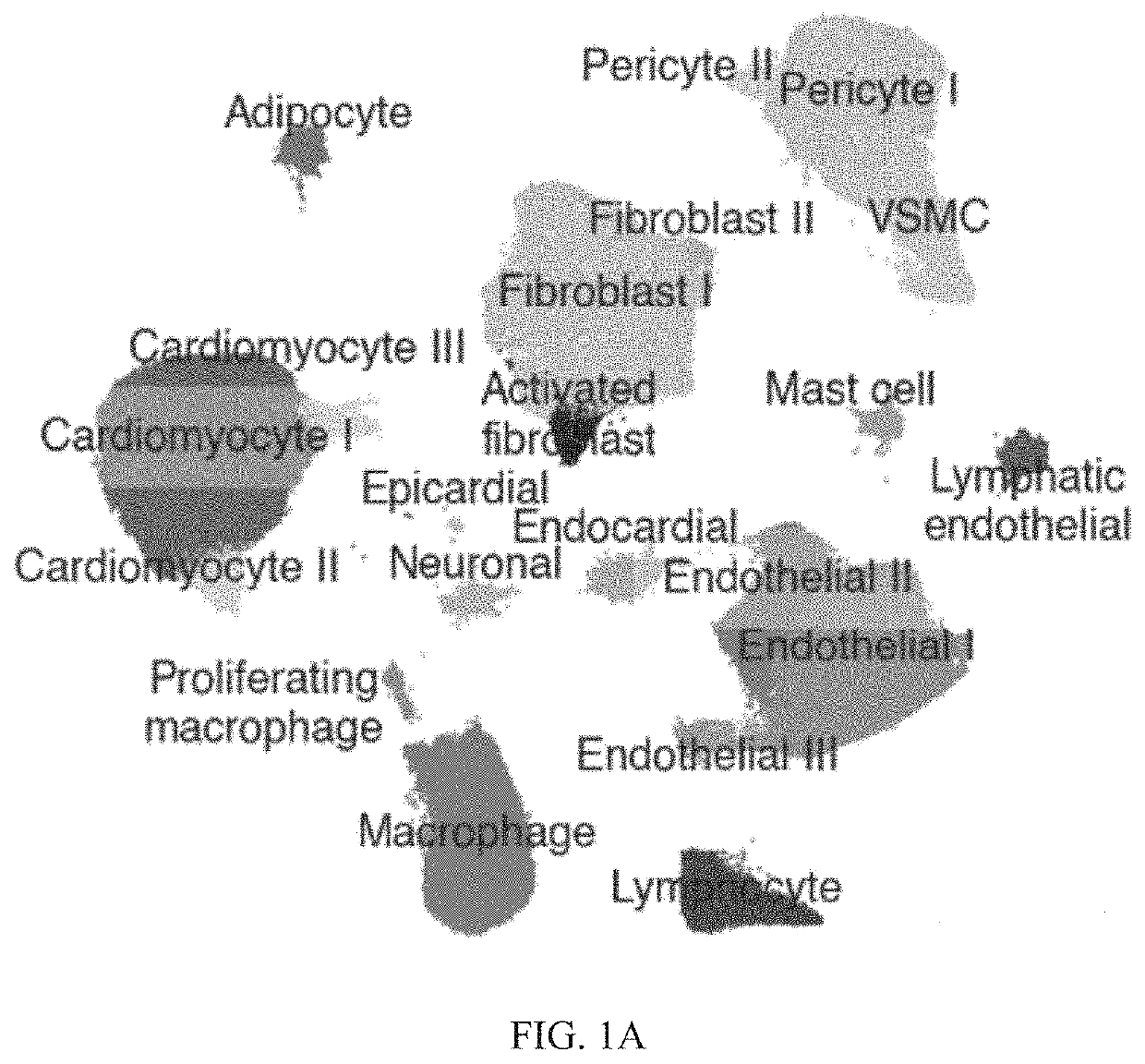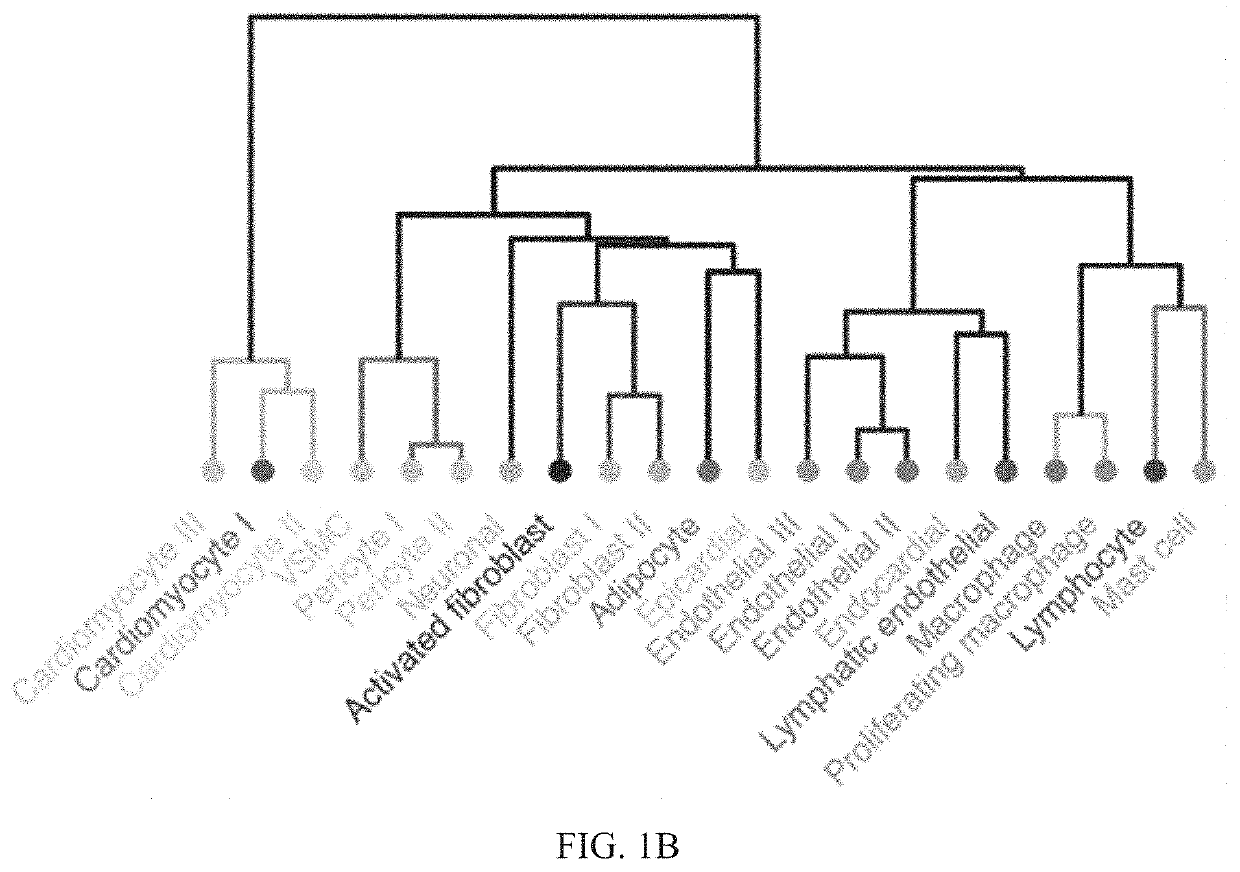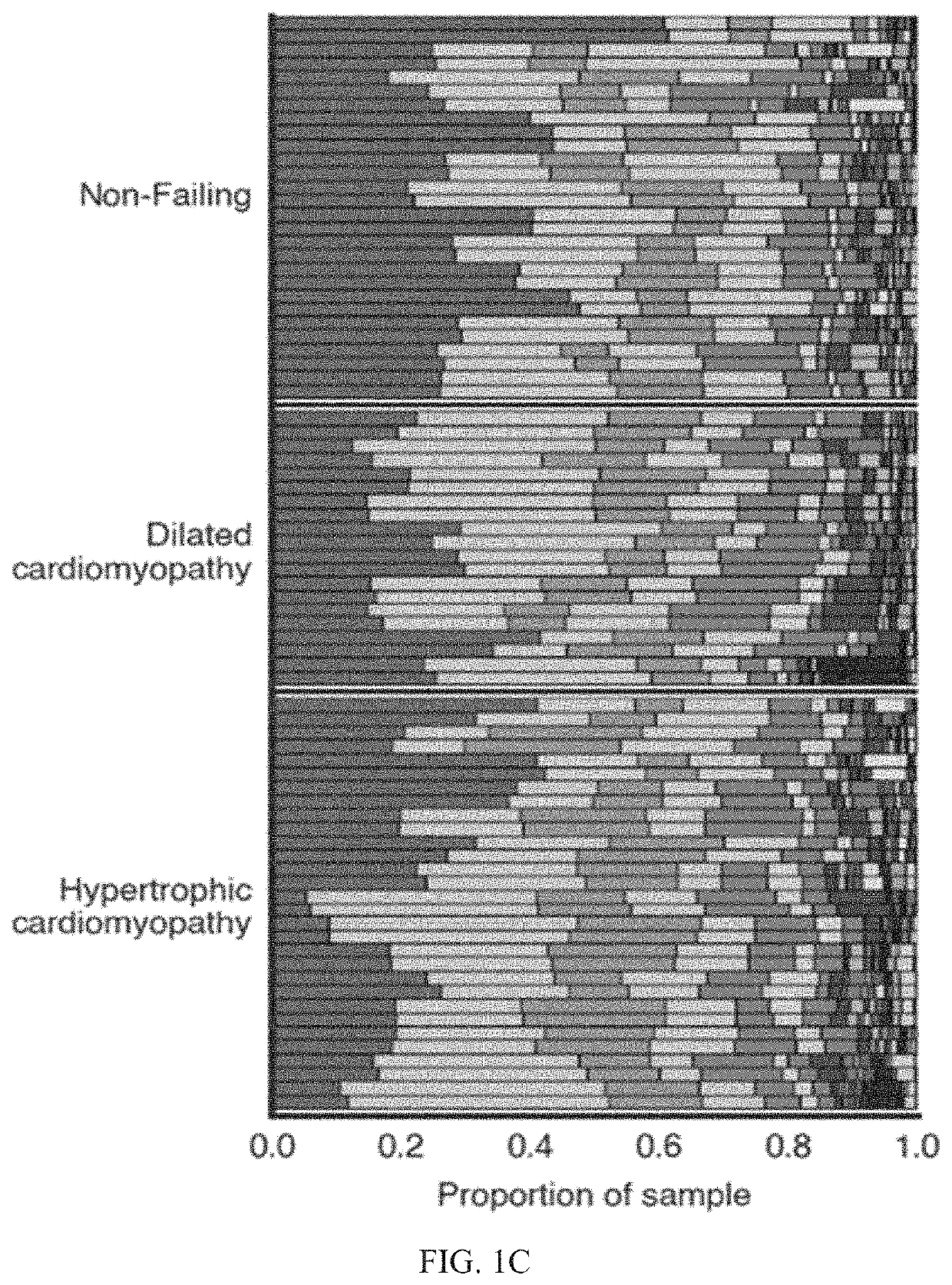Diagnosis and treatment of cardiomyopathy
a cardiomyopathy and diagnosis technology, applied in the field of diagnosis and treatment of cardiomyopathy, can solve problems such as limiting treatment options, and achieve the effect of diagnosing and treating
- Summary
- Abstract
- Description
- Claims
- Application Information
AI Technical Summary
Benefits of technology
Problems solved by technology
Method used
Image
Examples
example 1
Composition of Left Ventricle Samples from Dilated Cardiomyopathy (DCM) Patients, Hypertrophic Cardiomyopathy (HCM) Patients, and Healthy (NF) Patients
[0082]Given the immense public health burden of heart failure (HF), understanding the underlying mechanisms at a molecular level has been at the forefront of cardiovascular research. One common cause of HF, dilated cardiomyopathy (DCM), manifests as dilation of the left ventricle (LV) with systolic dysfunction, but normal LV thickness.5 Conversely, hypertrophic cardiomyopathy (HCM) is a heterogeneous disease characterized by a thickening of the LV wall and is often due to genetic mutations in sarcomere genes.5 Considering the complex etiology of HF, molecular phenotyping combined with careful examination of clinical phenotypes may yield unique insights into disease progression. Amongst these is the regulation of gene expression, where tissue level comparisons of RNA and protein have uncovered disease-specific transcriptional programs....
example 2
ation of Differentially Expressed Genes Between Cardiomyopathy and Healthy Patient Heart Samples
[0085]Next, differentially expressed genes between cardiomyopathy and NF hearts were identified across all cell types and within each cell type. Substantial changes in transcription when comparing DCM to NF and HCM to NF were identified, but interestingly there were markedly fewer changes between DCM and HCM, consistent with the PCA results above (FIGS. 2A-2B; FIG. 9; FIGS. 14A-14C). Notably, the largest number of differentially expressed genes between each of the cardiomyopathy groups and NF patients (false discovery rate (FDR)4
[0086]To further look for transcriptional differences amongst cardiomyopathy patients, HCM samples with preserved ejection fraction were compared to HCM samples with reduced ejection fraction. Differentially expressed genes were not observed in any cell-type at an FDR<0.01. Additionally, in an exploratory analysis, the presence of genes with expression changes in...
example 3
Proliferating Macrophage and Activated Fibroblast Populations in Cardiomyopathy Patients
[0089]Beyond assessing differential expression between cardiomyopathy and NF left ventricles within given cell types, a skew in distribution of cardiomyopathy and NF nuclei was noted in two cell types. Amongst all macrophages, 5 sub-clusters were identified, including a cluster of proliferating macrophages with upregulation of known cell cycle markers such as RRM2, TOP2A, and BRIP1 (FIG. 3A; FIG. 3D). While most sub-clusters appeared present in similar proportions between NF and cardiomyopathy, proliferating macrophages were notably reduced in patients with a cardiomyopathy (FIG. 3B). This population more closely resembles reparative CCR2 (C-C chemokine receptor 2) negative resident macrophages, as indicated by the elevated expression of prototypical marker genes for this heart macrophage subset (FIG. 3C; FIG. 3D; FIG. 15).
[0090]To identify sub-populations within global cell types that may shift ...
PUM
| Property | Measurement | Unit |
|---|---|---|
| Length | aaaaa | aaaaa |
Abstract
Description
Claims
Application Information
 Login to View More
Login to View More - R&D
- Intellectual Property
- Life Sciences
- Materials
- Tech Scout
- Unparalleled Data Quality
- Higher Quality Content
- 60% Fewer Hallucinations
Browse by: Latest US Patents, China's latest patents, Technical Efficacy Thesaurus, Application Domain, Technology Topic, Popular Technical Reports.
© 2025 PatSnap. All rights reserved.Legal|Privacy policy|Modern Slavery Act Transparency Statement|Sitemap|About US| Contact US: help@patsnap.com



